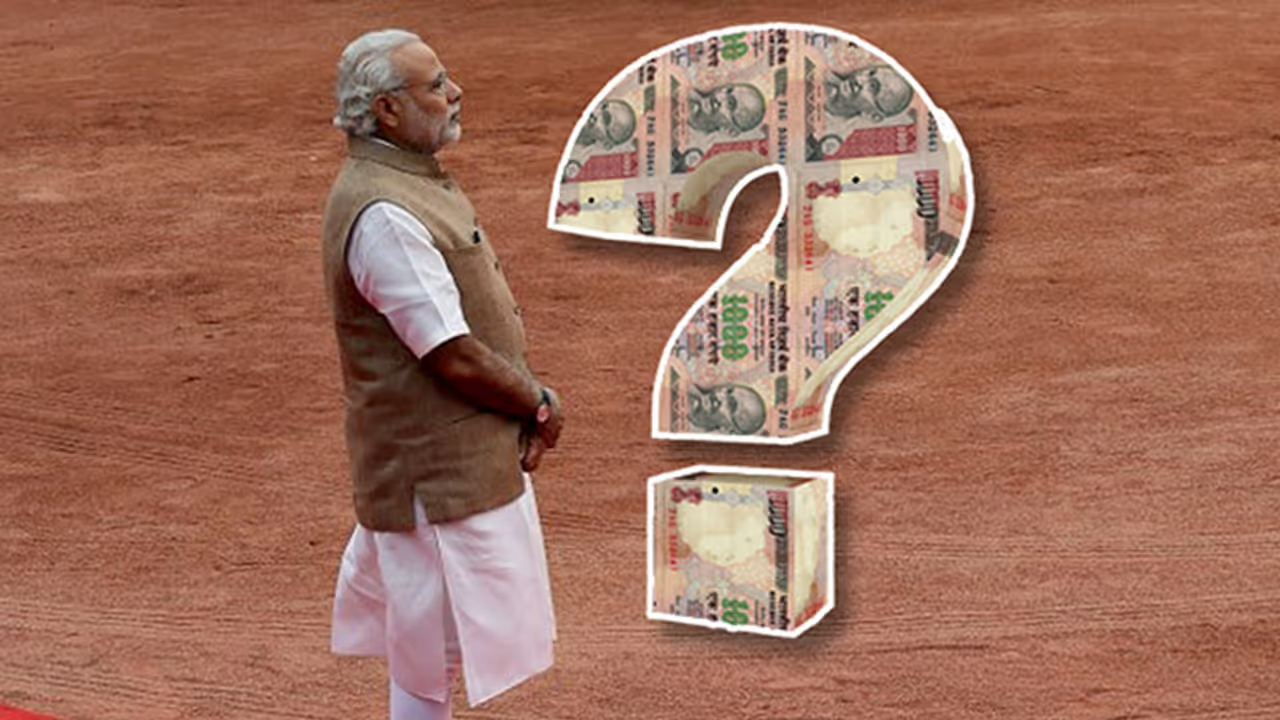Percentage of ₹ 500 and ₹ 1000 notes before demonetisation: 86% Total amount of ₹ 500 and ₹ 1000 notes before demonetisation: ₹15.04 lakh crores Total amount of demonetised notes that has come to bank till date: ₹12 lakh crores
- How many numbers of notes are going to lose their value on the midnight of 8th November?
Ans: 2,300 crore currency notes (this is number of notes, not the value of the notes)

- What is the capacity of the Government and RBI note printing press?
Ans: 300 crore notes per month.
- How many days does it take to print new notes of the same value that had been demonetised?
Ans: Minimum 7 months. If ₹100 notes are printed instead of ₹ 500 then the duration extends by 5 times more.
- What is the PM’s rationale behind releasing ₹ 2000 notes?
Ans: High value currencies accelerate the extent of corruption at the same ratio. That was the reason why high value currencies were demonetised. But in that place government has released ₹ 2000 notes for which no explanation is given so far. How is it stopping this vicious circle?
- Is it possible to disburse new currency notes instantly through ATMs?
Ans: It is not possible unless all the ATMs across the country are redesigned and recalibrated as per the size of new currency notes. It will take least 2 months time to redesign all the 2.5 lakh ATM machines.
- How to disburse new currency notes instantly?
Ans: That is impossible due to limited bank networks and shortage of bank employees.
- Then how many days does this crisis of currency notes perpetuate?
Ans: The nation is going to face a severe shortage of currency notes and it is not going to be solved in a short duration due to a shortcoming of the banking networks.
- What is the current status of bank networks in the country?
Ans: Out of 1,38,626 branches two thirds are located in metro cities, urban and sub-urban places and only one-third (47,443) is located in rural areas. Many villagers have to travel kilometres before they reach the nearest branch.
- What is the current status of ATM networks in the country?
Ans: Out of 2,15,000 ATMs, 55,690 ATMs are located in 7 metro cities. 90 per cent of ATMs are located in just 16 states and 10 per cent of ATMs (21,810) are spread across remaining 13 states and 7 Union Territories. North east states have just 5,199 ATMs out of which 3,645 ATMs are limited to Assam state alone.
- What are the adverse effects of demonetisation on the financial situation of the country?
Ans: The adverse effects are severe. GDP growth decreased at 1 per cent which means there has been a ₹ 1.5 crore decrease in the GDP growth.
- What is the analysis of ‘The Centre for Monitoring Indian Economy’?
Ans: In 50 days i.e., between 8th November and 30th December the country will facing a loss of ₹ 1,28,000 crores.
- How demonetisation has affected the common man?
Ans: Common people across the nation lose ₹ 15,000 crores just by standing in the queue.
- What is the printing cost of new currency?
Ans: ₹ 16,800 crores
- How much loss do the traders and entrepreneurs bear?
Ans: ₹ 61,500 crores
- What is the additional expenditure on incentives to bank employees?
Ans: ₹ 35,100 crores.
- What is the amount of money the banks get through the deposit of banned currency?
Ans: Total amount the banks get through the deposit of banned currency is ₹15.04 lakh crores. Even if it gets back 90 per cent of the banned currencies it amounts ₹ 1,40,000 crores. But if compared to the loss of JDG this amount is not going to fulfil the loss.
- In case if the economy gets 90% back again from the common man, then what is the achievement of note ban?
Ans: An absolutely nominal amount. This once again proves the phrase “making a mountain out of a mole hill”.
